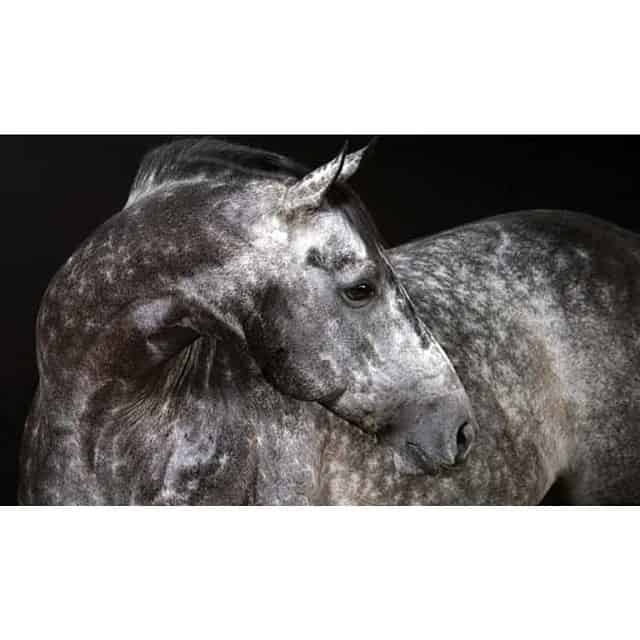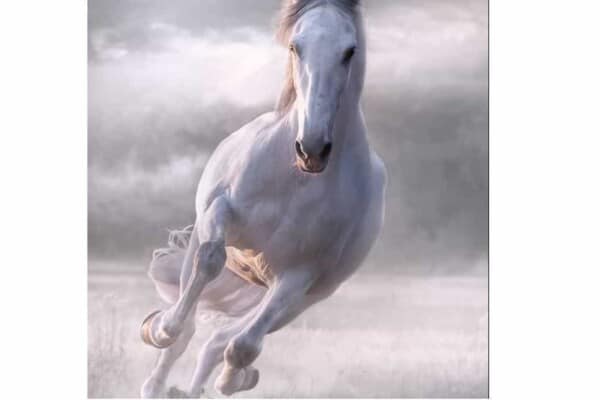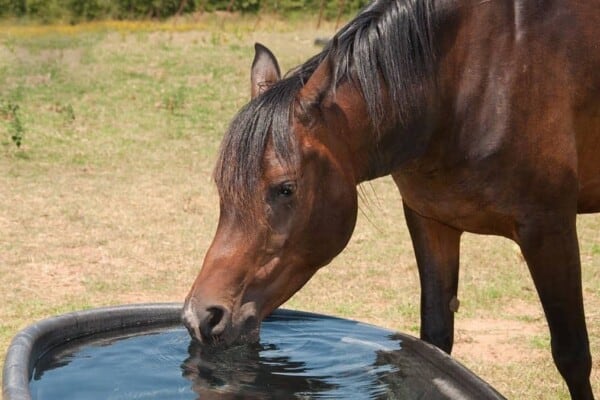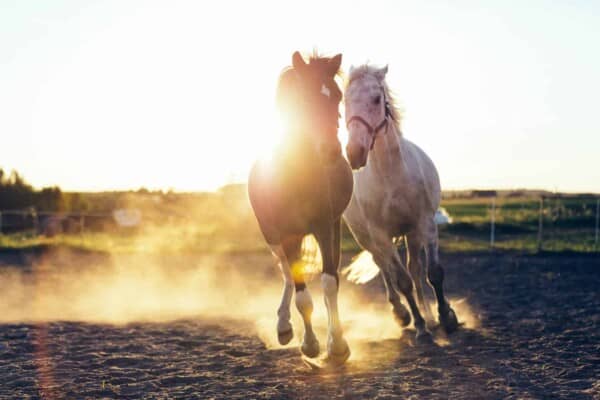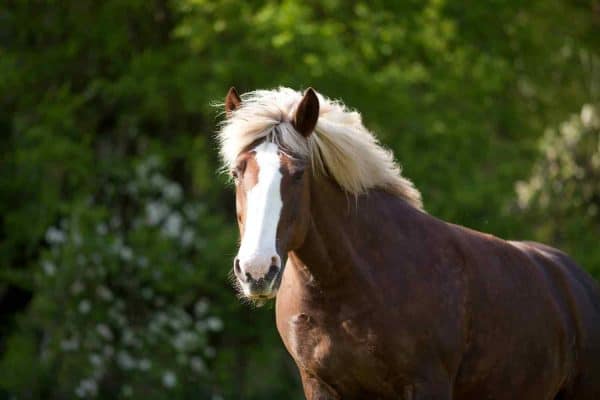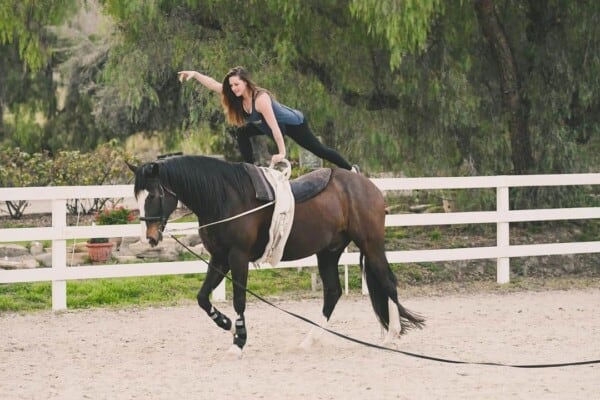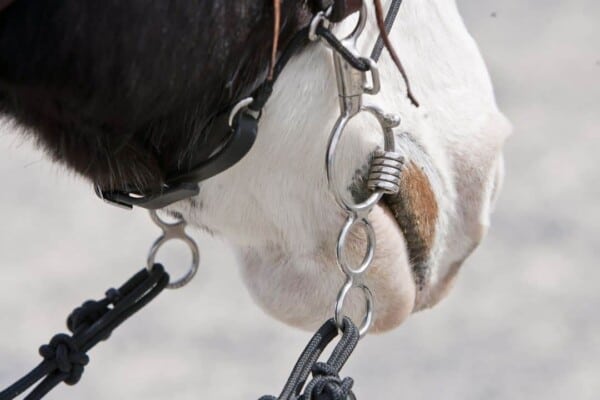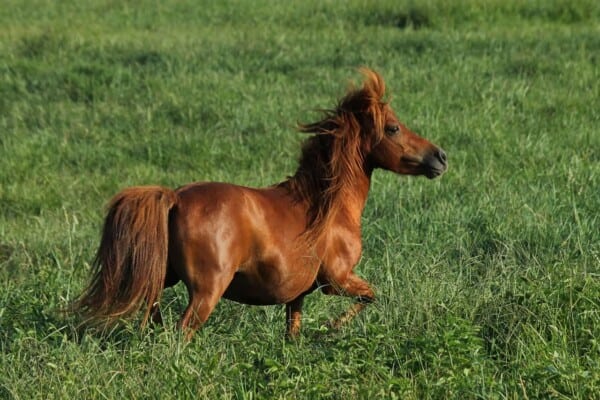The term grey horse can be confusing. This is because a grey horse can be born with any number of base colors depending on their genetics. However over time they will all slowly become more grey and most grey horses will eventually become completely white. At different stages in this greying process they may also be referred to as a dapple grey horse.
Grey horses all carry the same genetic mutation that has been passed down over thousands of years. It is thought that about one horse in 10 carries the mutation for graying with age.
Throughout history grey horses were actively bred into horse populations becuase of their unique beauty but for their ability to stand out in a crowd. It is important to understand that grey horses change color over time whereas white horses are born white and stay white throughout their lives. It is important to underdatnd this before we examine the dapple grey horse.
What is Dappling?
Dappling is the unique pattern of circles or irregular spots of different sizes that appear through a horse’s cost. These spots vary in size and can change depending on the season. Dapples are most associated with grey horses, but any coat color can have dapples. In darker coats, such as bay, dun, or chestnut, dapples are often much more subtle.
In gray horses, dappling tends to be much more prominent in a younger horse. As the horse ages and its coat get gradually lighter, dapples will fade. In horses with bay or other dark-colored coats, dapples usually appear and reappear at different times of the year. The most common time for dapples to appear on these coat types is in the summer after the winter coat has shed.
The exact cause of dappling is uncertain, but some factors can contribute to them. In horses of all colors, the extent of dappling is determined by genetics. In non-gray horses, good nutrition also contributes to bringing out dapples. Grooming your horse properly for around 10-minutes a day will also help bring out dapples. Don’t worry if your horse has a beautiful shiny coat and is in healthy condition, but never dapples. It doesn’t mean your horse is unhealthy, just that he probably doesn’t carry the genes that express dappling.
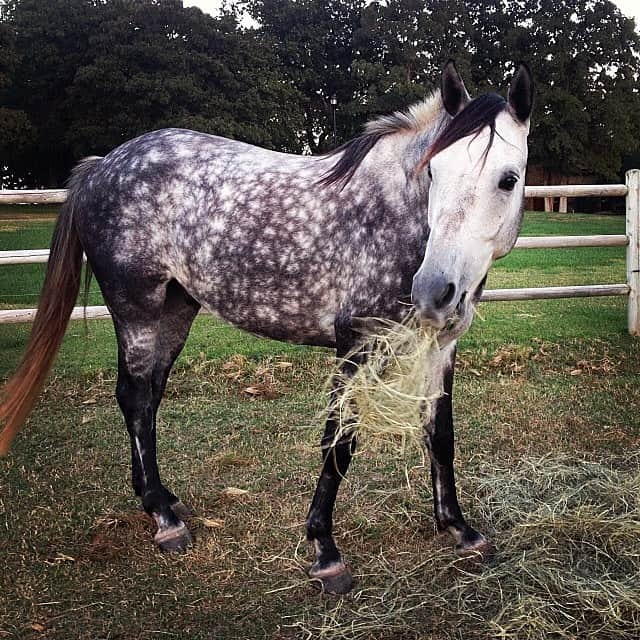
Dappling is a result of red or black pigmentation in the hair, not the skin. You will notice that when you body clip a dappled horse of any color, the dapples disappear. A dapple gray horse will become completely grey. Chestnut horses, even with the genes for dapples, will only show very faint dapples, if any at all. This is because they lack eumelanin, a pigment that allows other colors to show a strong color definition.
Dapple Gray Horse Genetics
Like all horse coat colors, gray is determined by genetics. To be gray, a horse must be carrying the allele, called zygosity. A horse with this gene will progressively turn white as it ages. However, gray horses aren’t born gray and full of dapples. They are born with a base color. This can be chestnut, bay, or nearly black. It is possible to know if a foal will gray out by distinctive gray goggles around their eyes.
The gray allele is a dominant gene. When two grey horses are mated, then you will always get a gray foal. Non-gray horses that do not carry the gray allele cannot produce a gray foal. However, if you breed a gray horse with a bay or chestnut horse there is a 50 percent chance of the foal being gray if it carries the less dominant form of the gray gene. If the foal is born non-gray it will be the carrier of the gray gene. This means that that foal can possibly produce a gray horse in the future.
If a horse possesses two gray genes, it will usually gray out quicker than a horse that only carries one. Dapple gray horses will whiten at different rates, but most are nearly completely white by the age of 9. Each horse will also be uniquely marked by dappling, with some having many large dapples, while others may have fewer or smaller ones. Even though a gray horse’s coat turns white, its skin will remain dark.
What is Silver dapple?
A silver dapple is quite different from a dapple grey. This beautiful coat is quite rare and caused by a different gene. It only occurs with black hair where eumelanin is present, thus while a chestnut horse can carry the gene, it will not be expressed in their coat. It can affect bay and black coats, creating a chocolatey color that is often noticeably dappled. The gene also affects the mane and tail of the horse, giving it a beautiful flaxen color. Unlike gray horses, a silver dapple coat does not lighten as the horse ages.
Silver dapple is a dilute gene. Essentially it is a gene that lightens the hairs. The specific gene responsible is known as PMEL17 (Z). Horses with both Z/n (n for normal) and Z/Z can express a silver dapple coat color. However, the silver dapple gene is associated with a high occurrence of Multiple Congenital Ocular Abnormalities (MCOA). Horses with mild MCOA usually do not have vision loss. Horses with Z/Z tend to have more severe MCOA.
The following breeds more are risk of MCOA:
- Morgan
- Icelandic
- Belgian Draft
- Shetland
- American Miniature
- Kentucky Mountain Saddle
- Mountain Pleasure
Horse Breeds that display dapple graying
The majority of horse breeds contain horses that at some point will be dapple grey, though it is more common in some. Grey is also commonly found in the Connemara pony and many warmblood breeds. It is less common in thoroughbreds.
Lippizan
Grey is the dominanat gene in Lippizans and the vast majority of Lippizans are grey as a result. The Lippizan breed is associated with the Habsburg monarchy and was their preferred coat color which they emphasized in breeding practices.
Lippizan foals are usally born bay or black and slowly become more gray over time. In general it takes between 6 and 10 years for a Lippizan to become fully gray.Like many other grey horses there is a common misconception that Lippizans are a white horse when in fact they are actually grey horses that have gone through the full greying process.
Andalusian
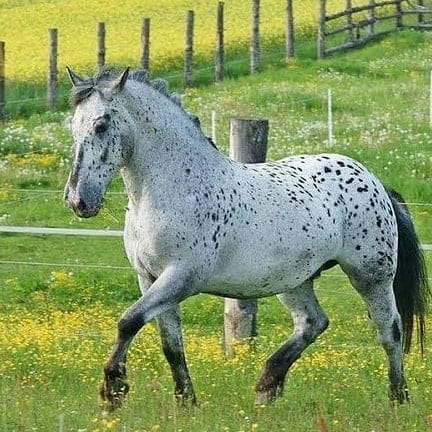
Andalusians have a range of different coats colors but the most common color is grey. Today it is thought hat approximately 80% of Andalusians in the USA are gray. Like other gray horse the Andalusian was prized for their nobility throughout and has a connecttion to royalty. They are closely related to the Potugese Lusitano which is another well known grey horse and dapple horse. Andalusian horses are known for being elegant and strongly built and are particualrly stunning when they have a significant dapple grey coat.
Percheron
Percherons come in a variety of colors but are most commonly gray or black. Other colors include bay, roan, and chestnut. French Percherons are only allowed in the studbook if gray.
Other breeds that have dapple grey horses include:
- Irish Sport Horse
- Camargue Horse
- Lusitano
- Dilbaz
- Standardbred
- Oldenburg
- Welsh pony
- Arabian
Do all dapple Grey horses eventually turn white?
A dapple horse will always turn white. This will occur over several years, with more and more of the horse turning white. Between the ages of four and seven, dappling will be the most distinctive. The last place dapples fade is along the hind end and legs.
Dapple grey horse names
If choosing a name for a dapple horse it is important to understand that their dappling is only temporary. With that in mind here are some of our favourites names for grays.
- Freckles
- Dusty
- Pebbles
- Ash
- Misty
See our articles on the stunning names for gray mares for more ideas.
Other interesting Facts about Greys
- Grey horses are predisposed to melanoma. These are most often found under the top of the tail.
- By the age of 15, as many as 70 percent of grey horses will have developed a melanoma. These are often benign, but unfortunately, sometimes they progress to malignant melanoma.
- The gray mutation gene that results in a dapple horse is believed to be 1000s of years old.
- Gray horses must have at least one grey parent.
- The spelling of grey horse differs depending on the region in which it is used. It can be spelled g-r-e-y- or g-r-a-y
- Gray horses can be born any color.

